Sigma 70-200 mm f/2.8 EX DG APO OS HSM
8. Vignetting
The photos of evenly lit surface show that on the smaller sensor of the Canon 50D there is still no cause for worry.
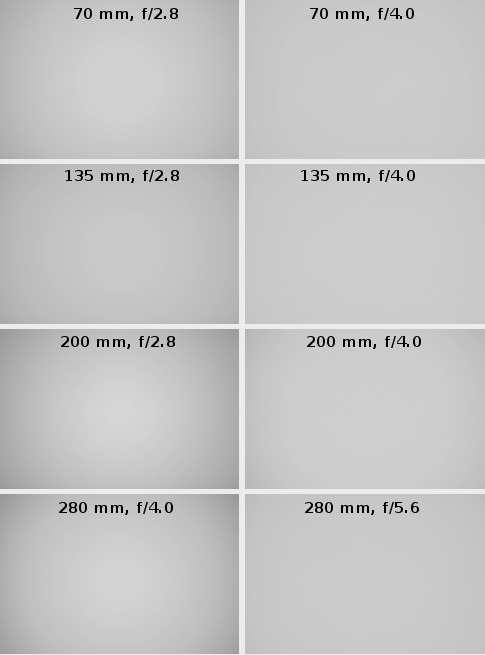
Please Support UsIf you enjoy our reviews and articles, and you want us to continue our work please, support our website by donating through PayPal. The funds are going to be used for paying our editorial team, renting servers, and equipping our testing studio; only that way we will be able to continue providing you interesting content for free. |
- - - - - - - - - - - - - - - - - - - - - - - - - - - - - - - - - - - - - - - - - - - - - - - -
For the combination of 70 mm focal length and f/2.8 aperture we lose only 18% of light in the corners (-0.59 EV) so also nothing to bother yourself with. Especially that on stopping down to f/4.0 the vignetting decreases to 5%.
At 135 mm the situation is even better – at the maximum relative aperture the vignetting amounts to 16% (-0.52 EV) and on stopping down to f/4.0 it decreases to 4%. Only the 200 mm focal length gives us a chance to notice the brightness loss in the corners in real photos. At the maximum relative aperture the vignetting is 27% (-0.93 EV), but it becomes imperceptible again by f/4.0, where it decreases to 10%.
Let’s see how the lens fares on full frame. Appropriate photos are presented below.
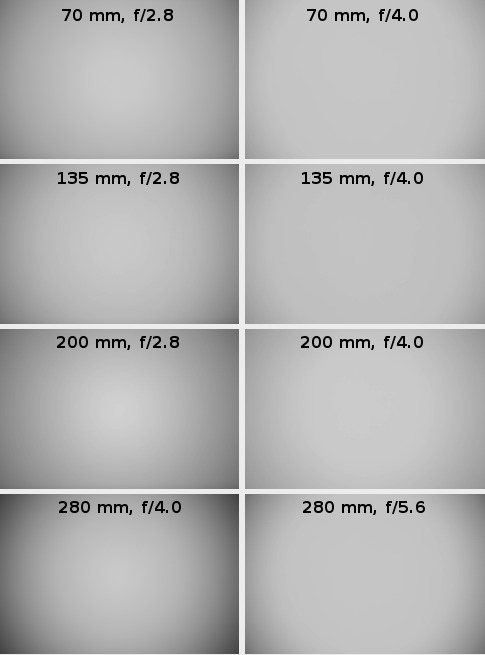
In this category the standards were set very high by the Nikkor 70-200 mm VR II. In its case the vignetting at the maximum relative aperture increased with the rise of the focal length from 22% at 70 mm to 34% at 200 mm. How does the Sigma perform here? Unfortunately it faces huge problems. At the shortest focal length by f/2.8 the light fall-off in the frame corners amounts to 44% (-1.68 EV). On stopping down to f/4.0 the level of this aberration decreases to 22% and by f/5.6 it is still 16%. Only by f/8.0 the vignetting becomes imperceptible (10%).
Almost identical situation can be observed at 135 mm. The vignetting is 45%, 23%, 16% and 9% there by f/2.8, f/4.0,f/5.6 and f/8.0 apertures respectively. It becomes even worse for the longer end of focal lengths range. At the maximum aperture the brightness loss in the frame corners amounts to 49% (1.93 EV) there. On stopping down the aperture by 1 EV we see it reduced to 26% and on stopping down by 2 EV it decreases to 18%. By f/8.0 the vignetting is just 11%.
It’s not the end of the story. The original Sigma converter seems to be a true bottleneck. Apparently it doesn’t manage to transfer the whole light, gathered by the lens, and at the maximum aperture (after using the converter it amounts already to f/4.0) the vignetting reaches a huge level of 67% (-3.2 EV). Even on stopping down to f/5.6 the light fall-off in the corners remains significant, getting to 43%. You can see it still by f/8.0 where its value amounts to 25%. It stops bothering us only by f/11 and f/16 where it is 17% and 11% respectively.
A huge light loss in the frame corners of photos taken with the lens-plus-converter set explains why we have to deal with such resolution problems there.
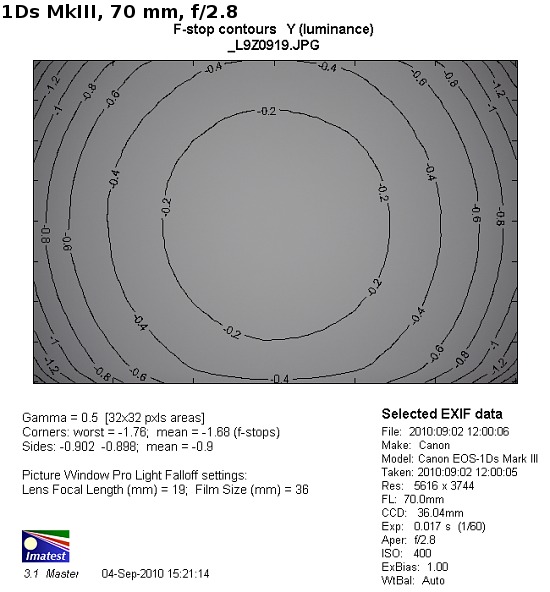 |
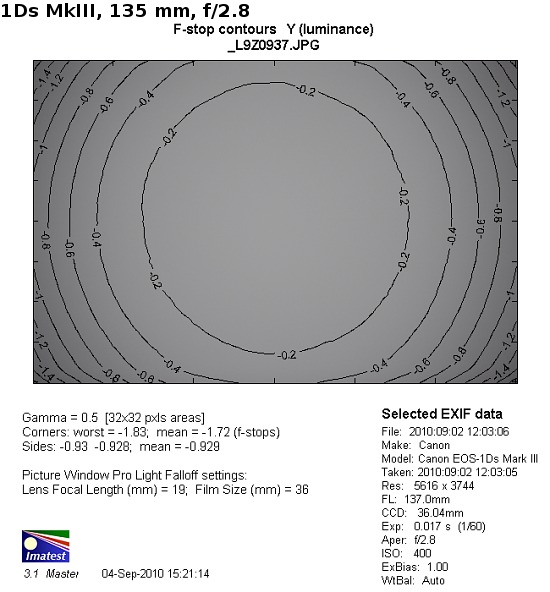 |
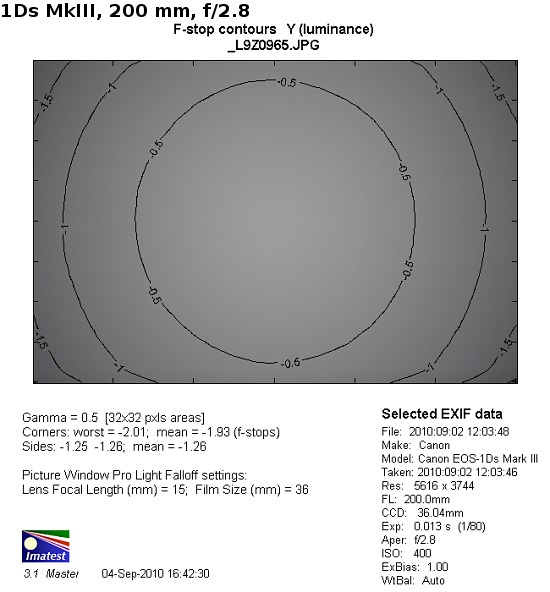 |
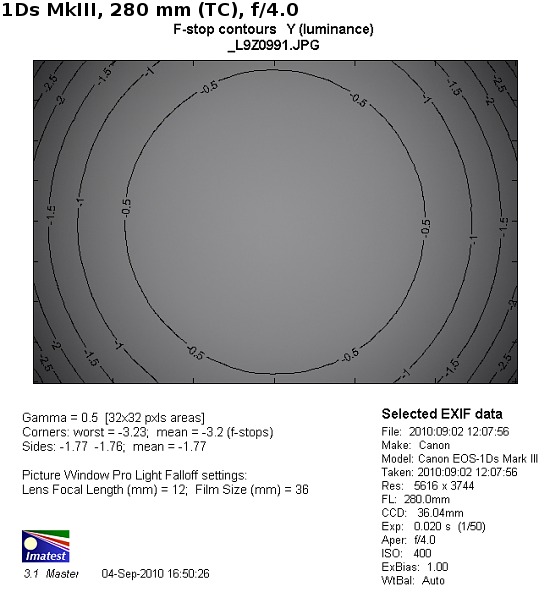 |






